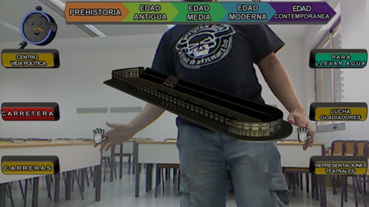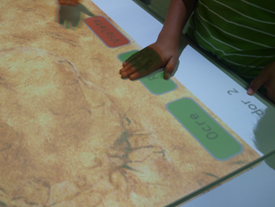Funded Projects
ArchaeoPills (link to the official web site)
Erasmus+ Project funded by the European Union from 2023-2025.
Archaeopills integrates 5 partners:
• University of Lorraine, France (Coordinator)
• University of Macerata, Italy
• Universitat Politècnica de València, Spain
• Eötvös Loránd Tudományegyetem, Hungary
• University Jaume I of Castellón, Spain
ArchaeoPills is an educational platform that will allow university lecturers to carry out actions aimed at explaining practical content for subjects with archaeological contents in the fields of Art and Humanities in the EHEA. The implementation modality is completely virtual and multilingual. The digital tools are integrated in an LMS Platform (Moodle) that allows the sharing educational resources in the EHEA with the aim of improving the digital competence of teachers and introducing in the classroom the training of students in archaeological field and laboratory practice through Virtual Reality (VR) and Augmented Reality (AR) applications, as well as providing new teaching methodological tools. This platform also allows sharing of ICT-enriched resources and activities and interconnect the platform, offering a personalised training proposal to students.
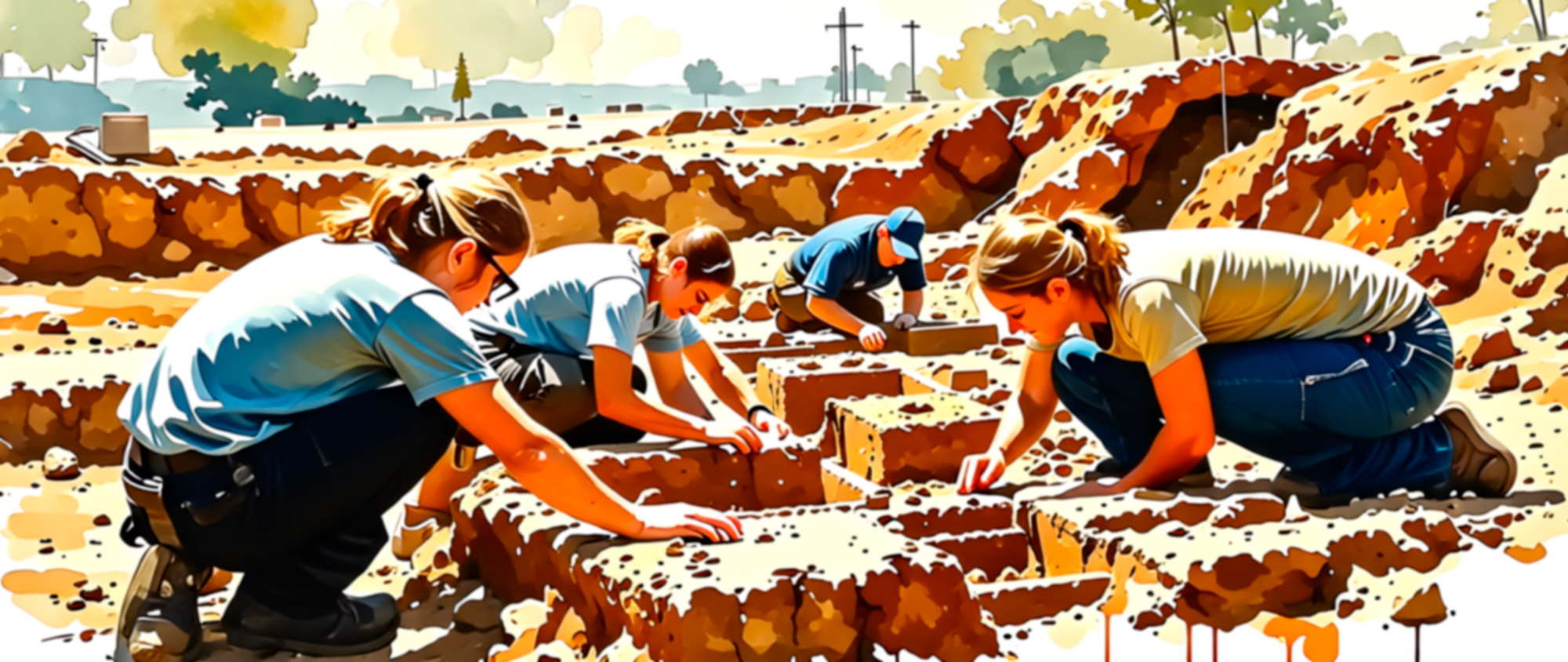
XREspAva Project
Project funded by the Spanish Goverment (National funds) from 2024-2028. Participants: ai2 of the UPV (coordinator), University of Zaragoza, and University of Oviedo.
The overall objective is to develop new techniques for the creation of Mixed Reality (MR) applications that use the Passthrough of Virtual Reality (VR) headsets and expressive avatars in multi-user applications, taking advantage of recent technological advances in headsets.
These applications will be validated as use cases through the development of applications for the assessment of spatial memory and its orientation strategies, as well as for social stress tasks. Synthesizing the specific objectives outlined in the research proposal, they would be as follows:
1) Identify the real limitations and advantages of the selected headsets.
2) Define generic and specific design guides for perspective-taking tasks and spatial orientation strategies; as well as for implementing realistic avatars for social stress tasks.
3) Using these guides, as use cases, design and develop applications for the assessment of spatial memory controlling perspective-taking ability, allocentric and egocentric spatial orientation strategies, and a multi-user application to induce acute psychosocial stress by modulating avatar reliability.
4) Validate the applications regarding their usability and sense of presence, as well as comprehensively evaluate them from a psychological perspective to determine their contribution in the field of health, particularly in psychology.
RMArthro Project
Project funded by UniSalut (Regional funds) from 1/1/2024-30/6/2025.
This project aims to convert an initial prototype into a fully functional mixed reality application for total hip arthroplasty. The application will allow the surgeon a better orientation of the acetabular component of hip prostheses since he will see virtual aids integrated in the real environment. The interaction will be gestural and natural. The functionality for instrumentation of the femoral component will be incorporated.
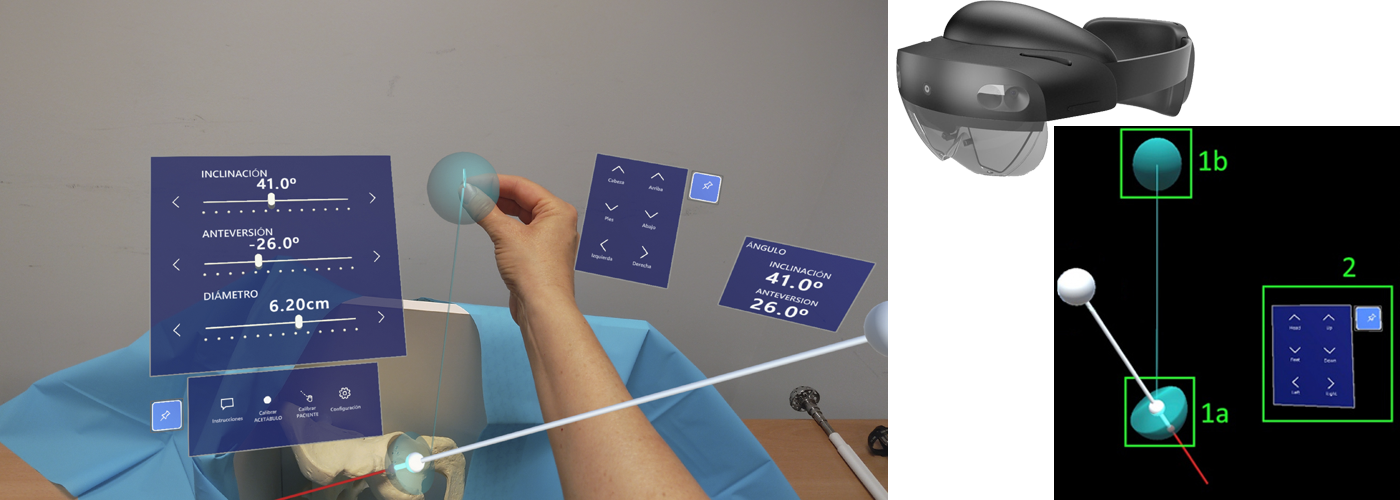
VIRTAPLI Project
Project funded by the Conselleria de Innovación, Universidades, Ciencia y Sociedad Digital (Regional funds) from 1/1/2022-31/12/2022.
This project focused on research in patients with persistent COVID and the status of their spatial localization memory.
AR3Senses Project
Project funded by the Spanish Goverment (National funds) from 2018-2021. Participants: Universitat Politecnica de Valencia, Universidad de Zaragoza, Universidad Autónoma de Madrid and Universidad Católica San Antonio de Murcia.
In AR3Senses project, the main objective is to develop new techniques of indoor localization in the scope of AR, taking advantage of the recent technological advances, and that will be validated by the construction of frameworks and applications oriented to the evaluation of the capacities of spatial orientation and location in adults with and without functional diversity. Specifically, it is intended:
1) To determine the effects of AR based on SLAM and with visual/auditory augmentation in processes of indoor spatial orientation and location.
2) To define generic and specific design guidelines.
3) To design and develop a framework and authoring tool that allow the creation of applications for such processes.
4) To validate the framework and the authoring tool with the creation of two use cases for small and large environments. 5) To validate such applications.
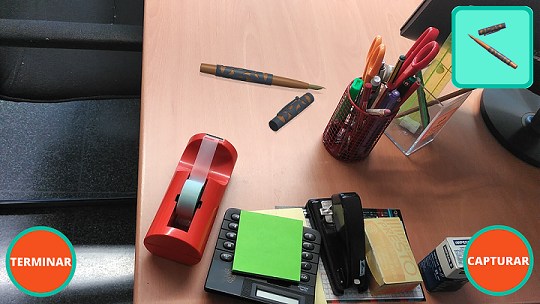
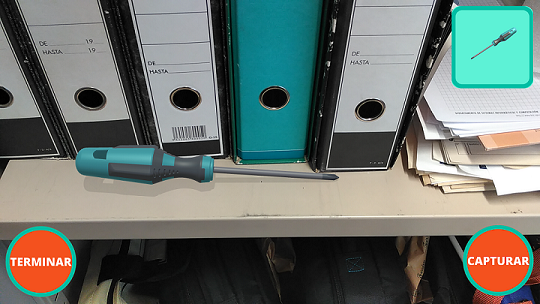
CHILDMNEMOS Project
Project funded by the Spanish Goverment (National funds) from 2013-2015. Coordinated project. Participants: ai2 of the UPV (coordinator), University of Zaragoza, UAM of Madrid and Escola d'Estiu (UPV).
In CHILDMNEMOS has been developed and validated innovative Virtual Reality (VR) and Augmented Reality (AR) systems for the assessment of spatial short-term memory. It has been shown that both AR and VR are suitable for the assessment of spatial short term memory in both children and adults. It has also been found that these technologies can be used as an alternative to traditional methods with the mentioned objective. Specifically, we have developed the following systems:
ARSM, AR on mobile devices showing virtual objects into real boxes in a real environment. The participant must remember the place where these virtual objects were.
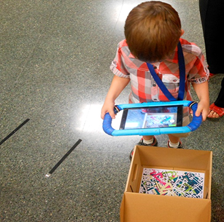
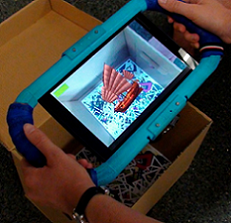
MnemoCity is to locate places associated with visual stimuli presented in a virtual environment (a park). The visualization is stereoscopic and used a large display. For the interaction have been used the Wii Balance Board and Wii Remote vs. a gamepad.
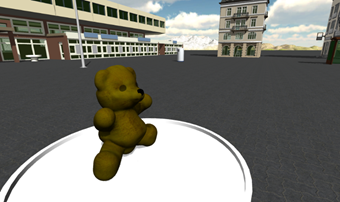
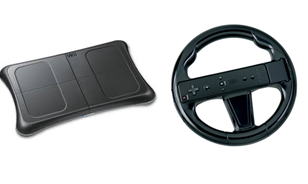
MnemoMaze is a virtual environment that recreates a maze with hedges of 3 meters of high, with intersections in which the participants, after a phase of habituation, they must remember the way to reach the end. The display devices and for interaction are the same as the used in MnemoCity.
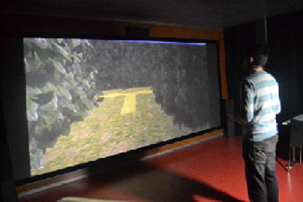
SAAM-2K is to locate places associated with auditory stimuli. Karotz, environmental devices, with the form of a rabbit are used. The participant hears a sound and should remember the Karotz that emitted the sound.
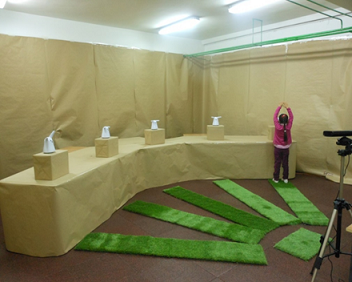
VRS-OBJ recreates a maze. The display is stereoscopic and the Oculus Rift is used.
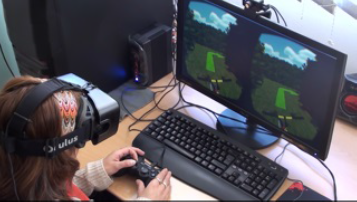
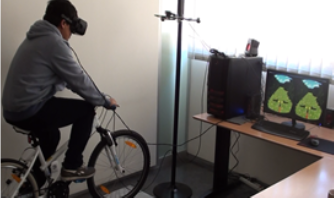
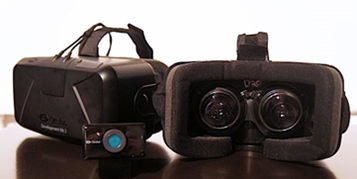
All tasks performed are compared with traditional tests or other developed systems. In our studies participated 494 children and 262 adults. From these studies, the following additional conclusions were obtained:
- Significant improvement in the performance of the group of older children was found.
- The visuospatial short-term memory is not fully developed at the age of 9 years.
- No statistically significant differences were found between gender.
- The participants liked the tasks, which seemed easy to use.
- The participants prone to motion sickness in real environments are susceptible to feel motion sickness in virtual environments.
- The Oculus Rift produces greater sense of immersion than the Power Wall.
- It is proposed a protocol to identify the suitability or not of a stereoscopic VR system for a particular user.
APRENDRA Project
Project funded by the Spanish Goverment (National funds) from 2010-2012. Coordinated project. Participants: ai2 of the UPV (coordinator), AIJU and Escola d'Estiu (UPV).
In the APRENDRA project, we have developed innovative Augmented Reality systems for edutainment in which new devices have been used, tangible interfaces and different visualization and interaction technologies. Specifically, the following systems have been developed using:
- Mobile Devices: iPhone, Tablet PCs (HP Slate 500).
- Tangible Interfaces, e.g., rotatory support.
- Visualization systems:
- Video see-through (e.g.iPhone).
- Autostereoscopy (autostereoscopic display of 46" and LG Optimus 3D (autostereoscopic mobile)).
- Frontal Projection.
- Natural interaction (using gestures).
All developed systems were compared with traditional learning or other developed systems. In our studies have participated 782 children. From these studies have obtained the following conclusions:
- No statistically significant differences were found with regard to the acquired knowledge between the developed systems (autonomous) and traditional learning (guided). These results indicate that these systems could provide versatility in the learning process, and that learning could take place at any place and any time without supervision. Therefore, it could be a useful tool to complement the learning process and assist in training needs.
- In mobile devices, the characteristics of the device (screen size and weight) were not a factor that had a significant influence on the lessons learned. However, the management of smaller devices, lower weight is a factor appreciated by younger children (7-8 years).
- Children learn significantly more with collaborative learning.
- Children have the depth sense (3D) with the autostereoscopic devices used, although it is a factor that had a significant influence on learning. However, it is an aspect that can be exploited in education when the sense of depth is relevant to transmit knowledge.
- Interaction using gestures is a natural interaction which facilitates system management. The children can learn in a similar way as they are used to play.
Two of the systems developed are for learning multiculturalism or the water cycle.
-
Learning multiculturalism. The first game developed in APRENDRA. The iPhone was used. Children learn about food,
animals, and monuments that can be found in the poorest continents. The game was included in the activity program
of the Summer School of the Polytechnic University of Valencia (july 2010). Eighty-four children played the AR game
and equivalent traditional games.
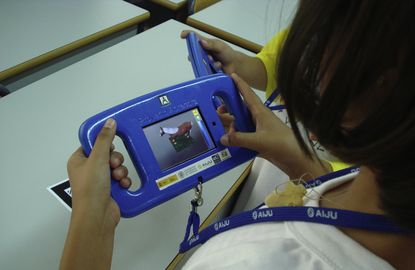
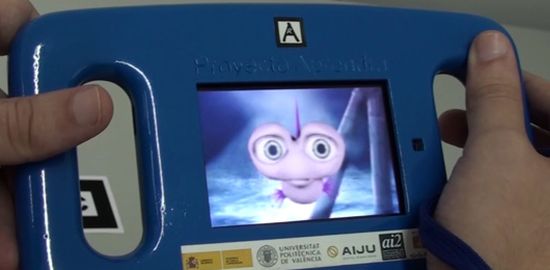
-
Learning the water cycle. The second game developed in APRENDRA. An iPhone and a Tablet PC were used. Children
learn about the water cycle. The game was included in the activity program of the Summer School of the UPV
(july 2011). Seventy-nine children played with the two devices.
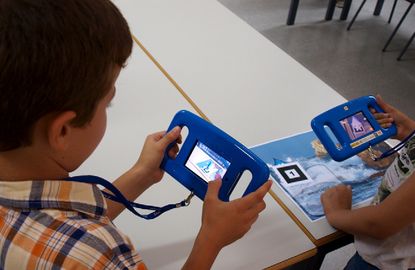
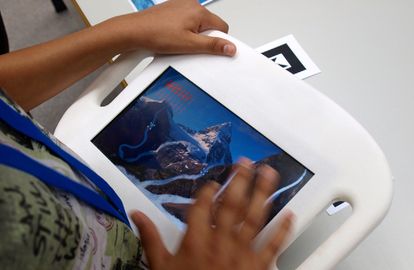
A third system developed are for learning about five historical ages (Prehistory, Ancient Times, the Middle Ages, the Early Modern Period, and the Contemporary Period). The system has two different versions. One of the versions is an autostereoscopic system that lets children see themselves as a background in the game and renders the elements in 3D without the need for special glasses; the second version is a frontal projection system that projects the image on a table in 2D and works similarly to a touch table. The Microsoft Kinect© is used in both systems for the interaction. A comparative study to check different aspects between these two versions was carried out. A total of 128 children from 7 to 11 years old participated in this study.
